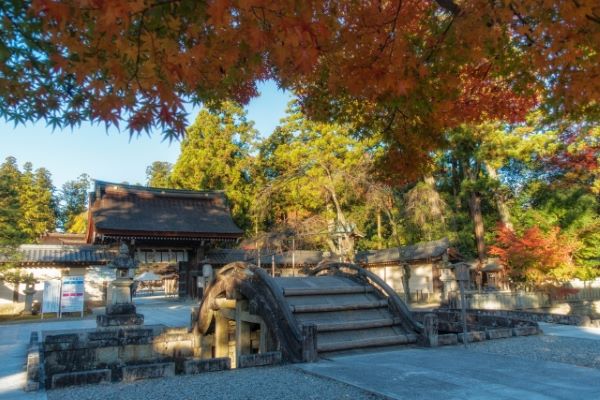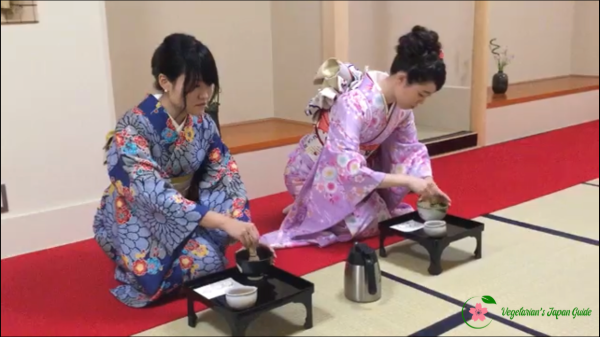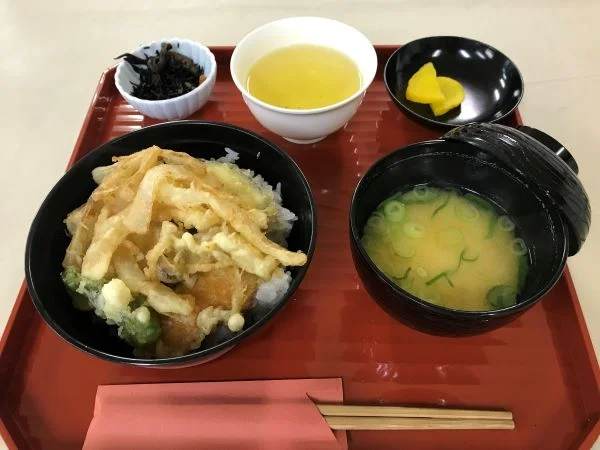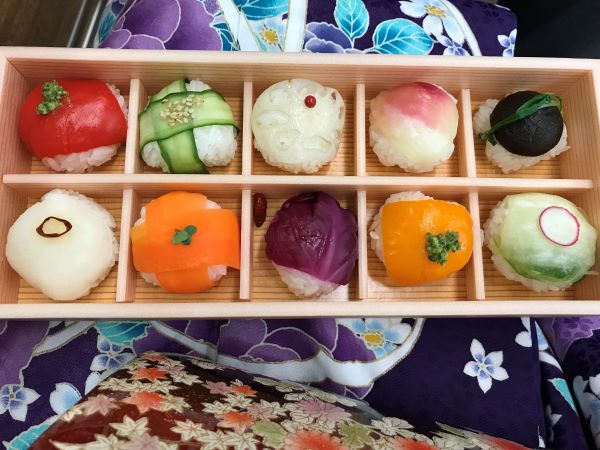One of the most famous attractions around Japan’s largest lake, Lake Biwa, is Hikone Castle (彦根城). The castle was never besieged and thus maintained its graceful appearance throughout the past 400 years. Because of its beautiful scenery, even those who aren’t interested in castles tend to pay it a visit when they travel to Shiga Prefecture.
Before we introduce the castle to you, here is a list of attractions we will go through!
A List of Contents
- Why Was Hikone Castle Built?
- The Construction of Hikone Castle
- Hikone Castle Escaping the Fate of Being Demolishing
- Hikone Castle, Gaining Multiple Titles
- Hiking Up to the Castle Keep
- Ōhorikiri (大堀切) – The Dry Moat
- Tenbin Yagura (天秤櫓)
- The Castle Keep – Tenshu (天守)
- Hikone Castle’s Flower Calendar
- The Best Route to Explore Hikone Castle
- Genkyū Rakuraku-en Garden (玄宮楽々園)
- Hikone Castle Museum (彦根城博物館)
- Hikone City’s Mascot – Hikonyan (ひこにゃん)
- How Long Does It Take to Explore Hikone Castle?
- Umoregi no Ya (埋木舎)
- Shiga Prefecture Gokoku Shrine (滋賀縣護國神社)
Why Was Hikone Castle Built?
The construction of Hikone Castle started in 1603 when Tokugawa Ieyasu founded the Edo Shogunate.
If you know a bit about Japanese history, you might have pictured a peaceful era when you heard “Edo Shogunate”. But that wasn’t the case.
The Siege of Osaka (大坂の陣), which saw the destruction of the Toyotomi Clan, took place in late 1614. So while the blueprint of Hikone Castle was conceived, tensions between the two superpowers continued in western Japan (i.e. Tokugawa vs. Toyotomi).
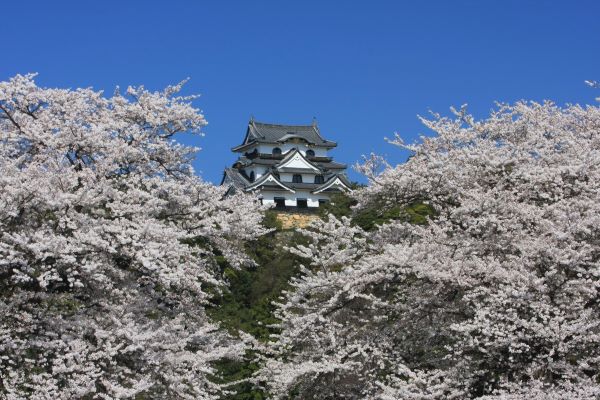
After the Battle of Sekigahara (関ヶ原の戦い), Tokugawa Ieyasu, the then in charge of eastern Japan, wanted to suppress the feudal lords in the Kansai Region. So he ordered Ii Naomasa (井伊直政), who was rewarded with the land at the eastern part of Lake Biwa, to build a new castle in Hikone.
Starting from Hikone Castle, a couple more castles, including Himeji Castle, were also built in regions surrounding Osaka to create an “Osaka Castle siege net”. This was probably one of the critical factors that enabled Ieyasu’s toppling of the Toyotomi Clan to become the leader of Japan in 1615.
The Construction of Hikone Castle
Although it only took less than two years to complete the castle keep, the rest of Hikone Castle was only completed in 1622. During these 20 years, many things happened.
Naomasa passed in 1602 due to a gun wound from the Battle of Sekigahara. His son, Ii Naotsugu (井伊直継), who became the next lord of the domain, was sent away from Hikone soon after the winter campaign of the Siege of Osaka. Naotsugu’s brother, Naotaka (直孝), who fought in the battle, replaced Naotsugu and became the third lord of the Hikone Domain.
After the summer campaign of the Seige of Osaka, peace finally arrived in Japan. So Naotaka ordered Hikone Castle’s construction to re-commence and saw the blueprint fully executed. Instead of having the castle built with new building materials, Hikone Castle utilized materials from other castles in the region, such as Nagahama Castle (長浜城) and Azuchi Castle (安土城).
Hikone Castle Escaping the Fate of Being Demolishing
In 1873, a decree was issued by the Meiji government to abandon all castles in the country. Following the government order, many castles in Japan were auctioned and demolished. Fortunately, the locals successfully pleaded to the emperor Meiji to preserve the castle when he was on his way back to Kyoto from the Hokuriku region (northwestern part of Japan) in 1878.
Consequently, an order to preserve the castle was issued, saving Hikone Castle from being sold.
Hikone Castle, Gaining Multiple Titles
In the 1950s, the castle was designated as a Special National Historic Site. Many buildings on the ground were designated as National Treasures or Important National Cultural Properties.
On a clear night, the view created by the moonlight shower on this more than 400 years castle is so unique that the scenery was chosen to be one of the Eight Views of Lake Biwa in 1950. Getsumei Hikone no Kojō (月明 彦根の古城) was the name given to the view.
Hiking Up to the Castle Keep
With the castle initially built as a base to suppress other feudal lords in Kansai, many mechanisms were put in place to strengthen the castle’s defenses. The castle on top of Mt. HIkone (彦根山) has its main quarter, Honmaru (本丸), built against Lake Biwa, making it extremely difficult to conquer.
When visiting Hikone Castle, you have to walk up a gentle slope. The elevation difference from the ticket gate to the castle keep is around 50 meters, which can be difficult for some to climb.

Ⓒ photo-ac.com
Ōhorikiri (大堀切) – The Dry Moat
Whether you are coming from Ōtemon Bridge (大手門橋) or Kuromon Bridge (黒門橋), it might be confusing when you arrive at the top of the stairs. You will probably feel like you are standing in an unfilled water canal.

This is a part of the defense mechanism of Hikone Castle. Ōhorikiri, which means “large dry moat” in English, is a trap to contain enemies. The samurais in the castle can easily annihilate anyone standing in the dry moat with any weapon.
Even throwing stones down is guaranteed to cause some severe damage.
But a simple moat wouldn’t be enough when facing thousands of attackers. So there is another point of intrigue in the design of the bridge. To get to the gate above the masonry wall, one has to cross the Otoshibashi Bridge (落とし橋) from the structure called Kane no Maru (鐘の丸) on the right of the photo. When the castle is under attack, the first thing the castle guards would do is collapse the bridge.
When you get there, if you examine the masonry wall carefully, you will find a part of the wall is dented. This was where the pier was standing, literally just on a stone.
Nowadays, as a tourist attraction, the piers have been appropriately affixed, making it safe for anyone to cross.
Tenbin Yagura (天秤櫓)
The turret on the other side of the Otoshi Bridge is called Tenbin Yagura (天秤櫓). It was constructed with the materials from Nagahama Castle’s Ōtemon Gate (大手門), which was demolished after a policy of “one domain, one castle” was issued.
Tenbin means balance measure. With the corridor in the middle, the turret looks symmetrical. This is how the turret got its name.

Walking further towards the castle keep, you will reach a guard station called Taiko-mon Yagura (太鼓門櫓). Inside the turret is a taiko drum for communicating and alerting those in the castle of any emergency.

In front of the Taiko-mon Yagura, there is a bell tower. The bell, named Jihōshō (時報鐘), was used to announce the time of the day back then.
Nowadays, the bell is preserved as a cultural heritage. Seeing it being struck and listening to the sound is quite an experience. The small traditional-style cafe next to the bell tower is a perfect accompaniment to this experience with a cup of matcha tea and a Japanese sweet.
The Castle Keep – Tenshu (天守)
It might not appear impressive when you finally get to the castle keep. The three-story castle keep is rather small compared to other castles in Japan. Despite this, it is still one of the last 12 castle keeps left in the world designated as a National Treasure!
The castle was fortified with many defensive mechanisms but was fortunate enough never to have been under attack. Except for regular maintenance, most parts of the castle we see today are from the Edo period. This is why it was designated as a Special National Historic Site.


The stairs inside the castle keep are angled at a startling 65 degrees! As you can imagine, climbing up and down these staircases can easily result in unwanted accidents. Thus, after the Seige of Osaka, no one spent their day in the castle keep.
From the top of the castle keep, you can get a panorama view featuring Hikone City with Lake Biwa at a distance.
The Nickname of Hikone Castle
Hikone Castle also has a nickname. Some called it Konki-jō (金亀城).
Before the castle was built, there was a temple called Hikone-ji (彦根寺) on Mt. Hikone. The temple was erected in 710 by the then provincial governor of Ōmi Province, Fujihara Fusasaki (藤原房前).
Inside the temple, there was a statue of Kannon Bodhisattva (観音菩薩), who was standing on a golden turtle. This is why the castle replacing the temple was called Konki, meaning golden turtle.
Before the temple was demolished, many came to pray for eye-related issues. Worshipping the Kannon Bodhisattva was considered incredibly effective. So much so that even Emperor Shirakawa (白河天皇) made a pilgrimage trip to Hikone-ji after he retired.
Hikone Castle’s Flower Calendar
As one of Japan’s Top 100 Cherry Blossom Spots, Hikone Castle is mostly known for its fascinating cherry blossom scenery. But it also has a vast plum forest! Each year from mid to late March, the view created by the approximately 450 red and white plums is in no way inferior to the cherry blossom!
The cherry blossoms at Hikone Castle usually also start blooming in mid-March and can last until mid-April.
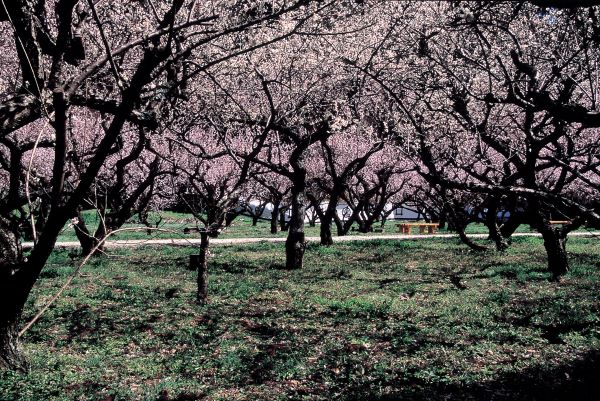

From early November, the fall foliage season starts. The vivid color of maples and ginkgo will last until early December.
The Best Route to Explore Hikone Castle
With only two ways to enter Hikone Castle’s grounds, we recommend not entering and leaving the castle from the same exit. Depending on where you come from, you can cross the outer moat of Hikone Castle by either crossing Ōtemon Bridge (大手門橋) or Kuromon Bridge (黒門橋).
Note that the Genkyū Rakuraku-en Garden (refer to below) is close to Kuromon Bridge. So check out the garden first if you enter the castle through Kuromon Bridge.
Genkyū Rakuraku-en Garden (玄宮楽々園)
At Hikone Castle’s northeast, the gorgeous Genkyū Rakuraku-en is an attraction some tourists miss out on.
The Genkyū Rakuraku-en Garden consists Genkyū-en Garden and Rakuraku-en, where a couple of traditional houses are located. They are both designated National Place of Scenery Beauty and belonged to the lord of the Hikone Domain in the first half of the Edo period.
The entire complex was used as a reception hall to host guests and entertain them with tea ceremonies.
The garden used to be the residence of the senior vassal of the Ii Clan. In 1677, Genkyū-en was renovated by the 4th lord of the Hikone Domain. It was designed by using the scenery of Lake Biwa and the Eight Views of Ōmi (近江八景) as models. Apparently, the castle’s lord was very proud of this garden, comprising 9 bridges and large ponds with islands in the middle.
Up on a hill is a tea room overlooking the spacious garden.

In November, the garden is usually illuminated at night.
If you have seen Japanese period dramas or movies, you may have a misconception that what the samurais do in the garden is feed their carp. But, the Genkyū Rakuraku-en Garden is more practical than just this.
There is also a training ground for horses and archery.
Hikone Castle Museum (彦根城博物館)
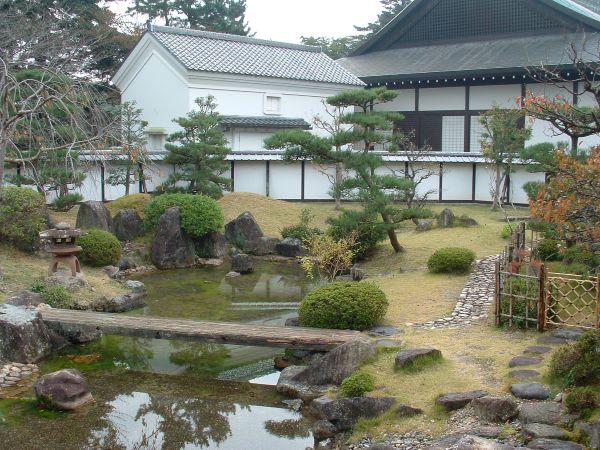
If you visit the castle through the Omotebashi Bridge, you will encounter Hikone Castle Museum first (just at the right of the ticket gate).
Hikone Castle Museum was called Omotegoten (表御殿) back in the Edo period. It was the residence of the Hikone Domain’s lord and his office.
The building was once destroyed in the Meiji period but was restored to how it looked before. The restoration efforts exhausted available research and documentation. The building was completed in 1987 as a part of the celebration of the 50th anniversary of the municipalization of Hikone.
The museum exhibits 45,000 artifacts in its collection related to the Ii Clan. In the exhibition rooms, you will find the red armor of Ii and samurai swords that were used in the Battle of Sekigahara (関ヶ原の戦い). Gorgeously painted pottery and container of various sizes are also on display.
If you like tea ceremonies or Noh play, you will also find precious tea utensils and a large set of Noh masks and Noh costumes in the museum.
Within the complex, the Noh theater and a tea house were restored with other buildings in 1987 as well.
For more information about the museum, please refer to the official website HERE.
Important: Please keep in mind that the English descriptions of the exhibits are limited.
Hikone City’s Mascot – Hikonyan (ひこにゃん)
When you visit Hikone, you might find many souvenirs and menu items in restaurants and cafes that feature a cat with a samurai armor helmet.
His name is Hikonyan, and he was born in 2006. The cat is so famous that some collectors would travel all the way to Hikone for merchandise and food menus that have the cat printed on them (´▽`*).
So why use a cat, not a dog or other animals? It has to do with the cat that the second lord of the Ii Clan encountered.
When Ii Naotaka (井伊直孝) stayed in Edo (Tokyo), he went out one day for falconry. On his way back, he walked past the Gōtoku-ji Temple (豪徳寺) and saw a cat at the front gate. The movement of the cat’s hand seemed to be waving at him. So he stopped briefly at the temple, which sheltered him from a thunderstorm. Feeling thankful for the cat and the temple, he made it Ii Clan’s family temple. Gōtoku-ji since prospered with support from the clan.
Where and When Can You Meet Hikoyan?
If you are interested in meeting Hikonyan, check the official website HERE for this schedule. You can also check with the staff when you arrive at Hikone Castle.
How Long Does It Take to Explore Hikone Castle?
It would be best to allocate at least an hour. This is the required time for a return trip from the ticket gate to the castle keep.
If you also plan to visit the gardens and the museum, you will probably need around 2 hours (some even spend up to 3 hours).
Important: There might be a queue to get into the castle keep on weekends and public holidays.
Hikone Castle’s Opening Hours, Admission Fee, Access Information
- Hikone Castle is open from 8:30 am to 5 pm. The last admission is at 4:45 pm.
- The admission fee, including access to Genkyūen Garden (玄宮園), is
- 800 yen for adults
- 200 yen for Elementary and junior school students
- The admission fee for Hikone Castle, Genkyūen Garden, and the Hikone Castle Museum is
- 1,200 yen for adults
- 350 yen for Elementary and junior school students
- The admission fee for Genkyūen Garden only is
- 200 yen for adults
- 100 yen for Elementary and junior school students
- The admission fee for Hikone Castle Museum only is
- 500 yen for adults
- 250 yen for Elementary and junior school students
- From JR Hikone Station (彦根駅), it is a 15-minute walk.
Umoregi no Ya (埋木舎)
Across the bank of Hikone Castle’s outer moat, the residence facing Hikone Castle Museum was where the 13th lord of Hikone Domain, Ii Naosuke (井伊直弼), spent 13 years from the age of 17.
Being the 14th son in the family, he had minimal chance of becoming the clan leader. He named the residence Umoregi, meaning the tree buried under the ground, which can’t be seen. It echoes his condition back then when no one witnessed his talents.
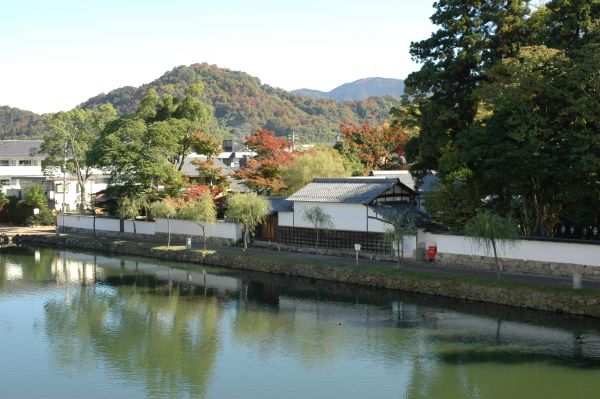
The Early Life of Ii Naosuke
At the time, only the son chosen to be the successor may remain in the castle. All other sons were sent away once they reached adolescence.
After they left the castle, they could choose to be adopted by prestigious vassals of the domain or other clans in the country. Alternatively, they can also become a monk. Those who didn’t get adopted and didn’t want to become a monk would receive a minimum supply from the domain and live a simple and ordinary life.
Naosuke, who wasn’t adopted, chose to stay in this residence and devote himself to learning. From tea ceremonies, waka poems, zen, and even grasped a good understanding of international affairs. He also mastered various kinds of martial arts, including jujitsu and archery.
Ii Naosuke’s Extraordinary Achievements as a Fuduel Lord
In 1846, the successor of the 12th lord of Hikone Domain passed away at a young age. So, it was finally Naosuke’s turn to become a successor!
He was first recognized as the lord-to-be of the Hikone Domain by the Shōgun in Edo and worked at Edo Castle for the next six years. In 1851, the year after the 12th lord of the Hikone Domain passed away, he returned to Hikone and became the 13th lord of the domain.
Naosuke was a great leader. Soon after returning to Hikone Castle, he distributed much of his inheritance to his people. Talented people were appointed, and new rules were set to ensure fair trials. He also patrolled through his territory to get a first-hand glimpse of how his people lived.
In 1853, the Tokugawa Shogunate received a request for diplomatic relations from the U.S., for which Naosuke acted as a diplomat. A few treaties were signed between the two countries, and Japan was finally open to trading with other countries.
Had the treaties not been signed in the 1850s, there was a great chance that Japan would have been invaded. However, his achievement also made him the target of those against trading with foreigners and the Edo Shogunate. In 1860, Naosuke was attacked and killed on the way to Edo Castle from his residence, ending his life at the age of 46. The event is now known as Sakuradamon Incident (桜田門外の変).
Exploring Umoregi no Ya
This National Historic Site is quite spacious, with facilities such as tea rooms, meditation rooms, gardens, and much more!
For a detailed guide to the residence, please refer to the official website HERE. You will also find a flower calendar on the Ten Wonders of Umoregi no Ya page (please scroll down).
Umoregi no Ya’s Opening Hours, Admission Fee, and Access Information
- Umoregi no Ya is open from 9 am to 5 pm daily except Mondays.
- The last admission is at 4:30 pm.
- If Monday is a public holiday, it will close on the next business day.
- The residence closes from the 20th of December to February.
- The admission fee is
- 300 yen for adults
- 200 yen for high school and university students
- 100 yen for elementary and junior high school students
Shiga Prefecture Gokoku Shrine (滋賀縣護國神社)
Near Hikone Castle, the Shiga Prefecture Gokoku Shrine is a somewhat depressing place.
In 1869, the Boshin War (戊辰戦争) ended the reign of the Tokugawa shogunate concluded. Subsequently, the Meiji government ordered a monument erected in Ryōtan-ji Temple to remember the 26 soldiers from the Hikone Domain.
Six years later, by the advocacy of Ii Naonori (井伊直憲), a shrine was built, and the monument was moved to the shrine’s precinct. Since then, it has become a shrine that enshrines the fallen soldiers related to the Shiga Prefecture. After World War Two, more than 34,000 fallen soldiers were enshrined here.
A few changes were made to the shrine’s name, but it has eventually settled as Shiga Prefecture Gokoku Shrine.
The Thought-provoking Statues and Monuments in Shiga Prefecture Gokoku Shrine
Nowadays, the shrine isn’t just a place to honor the dead. Similar to the Hiroshima Peace Memorial Park, it is where people pray for world peace. Moreover, the locals also come here to show their appreciation for the soldiers’ contribution to the country.
Across the precinct, many monuments and statues are placed to remind us of the importance of peace and the damages a war will cause.
For example, the statue on the left in the photo is “the Statue of Father” (父の像). It represents the fathers who had to leave their families to fight for Japan and died in wars.
On the left side of the Statue of Father, there is a “Statue of Mother” (母の像). It represents the women in the country who had to protect their families without their husbands during wars. If you pay attention to the mother’s clothes, you will notice her clothes are patched here and there. Furthermore, she only had a pair of Japanese sandals. Compared to the woman, the girl next to her is properly dressed, reminding us of the love children receive from their mothers.
Together, the statues encourage us to learn from history and create a world without wars.
At another corner of the shrine, a statue consisting of a horse, a dog, and two doves is standing. It commemorates the three types of animals used and died in wars.
Next to the Statue of Father, a monument delivers a slightly different message. The characters of Flower Mound (Hanatsuka, 花塚) are engraved on the big rock.
It isn’t commemorating certain flowers that have dispersed. The monument was gifted by the head of a flower arrangement school in Japan to show their appreciation for the flowers that can brighten up our lives and express their hope of protecting nature.
Each April, rituals are performed in front of the monument.
Shiga Prefecture Gokoku Shrine’s Opening Hours and Access Information
- The shrine office is open from 9 am to 4:30 pm.
- The shrine will close at 5 pm.
- From JR Hikone Station’s (彦根駅) west exit, it is a 10-minute walk.
- If you are taking a bus, please get off at Gokoku Jinja-mae (護国神社前) or Shinmin Kaikan (市民会館).
Tips: Plan your visit in the morning (from 8 am to 12 pm) on the third Sunday of each month to catch the Hikone Morning Market (こねで朝市)!
Where Else to Visit in Hikone
Want to find out more attractions nearby that you might be interested in? Check out our article on Hikone!
In the article, you will be introduced to some delicious Japanese and Western sweets shops, interesting temples and shrines, and many more historical destinations you might not know!


